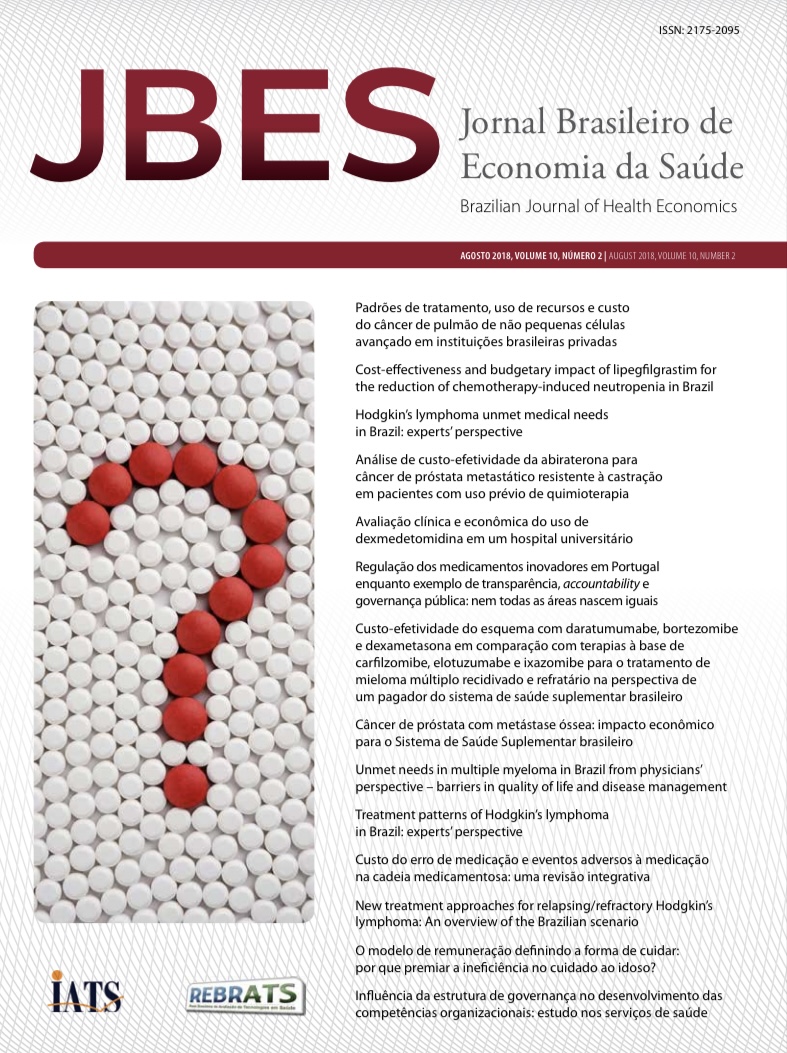Regulation of innovative drugs in Portugal as an example of transparency, accountability and public governance: not all areas are born equal
Keywords:
public administration, INFARMED, regulation, innovative therapies, public policiesAbstract
Objective: Regulation as an area of governance becomes evident in the different dimensions of contemporary public administration. The regulatory activity concerning health technologies in Portugal is carried out by INFARMED (National Authority of Medication and Health Products), as an autonomous administrative entity under the Ministry of Health’s jurisdiction, playing a fundamental role in the evaluation of the innovative drugs’ financing terms by the State. A figure called Special Authorization Use (AUE) was created to allow access to drugs that are under evaluation by INFARMED, which are not yet reimbursable, representing a significant financial effort by the State. In this work the authors analyzed AUEs granted during a determined period of time in order to identify critical areas for administrative and regulatory strategies. Methods: The authors used data from the INFARMED for AUEs granted from January 1st to the 31st of August 2016. This analysis is divided according to category: absolute frequency of each therapeutic area and absolute frequency of each drug. Results: Data analysis highlights two realities: 60% of the AUEs granted refer to the oncology therapeutic area, being the second most frequent the ophthalmologic area corresponding to only 15%; and 7 out of the 10 most required drugs through AUEs are used to treat oncological diseases. Conclusions: From this analysis, it can be inferred that the efforts of the administrative and regulatory authorities and the political reforms regarding drug policies should focus mainly on the area of cancer pathology, considering the current growing panorama regarding the technologies of innovation in health.






